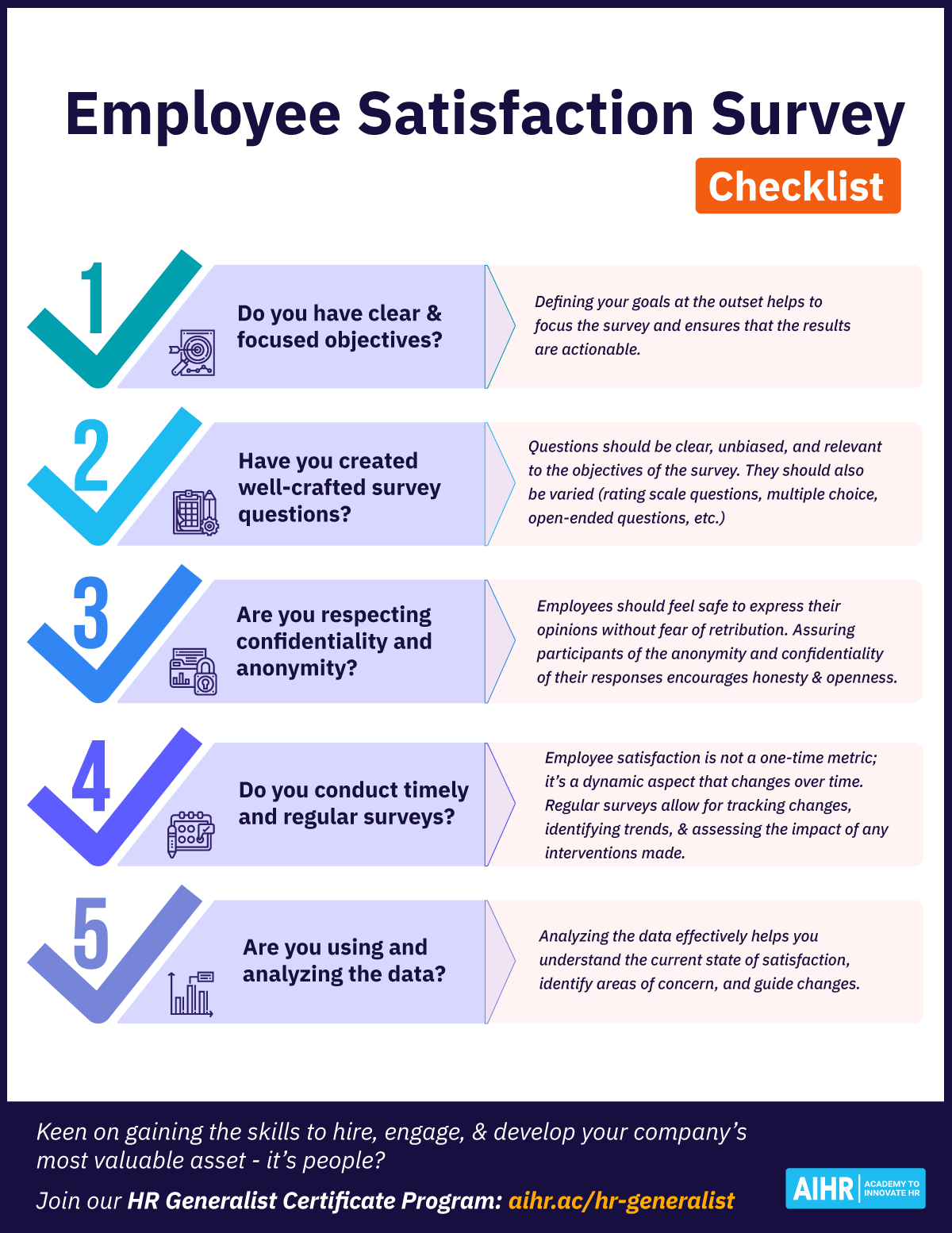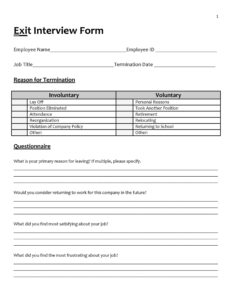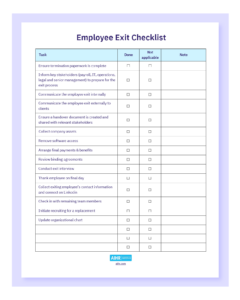There are many different types of employee satisfaction survey templates available, and the best one to use will depend on the specific needs of the company. Some common types of employee satisfaction survey templates include:

- General employee satisfaction surveys
- Employee engagement surveys
- Exit interview surveys
- 360-degree feedback surveys
Employee satisfaction surveys can be a valuable tool for companies that are looking to improve their employee morale, productivity, and retention. By using a well-designed employee satisfaction survey template, companies can collect valuable feedback from their employees and use it to make positive changes to the workplace.
Key Components of Employee Satisfaction Survey Template
Employee satisfaction survey templates typically include a number of key components, which may vary depending on the specific purpose of the survey. However, some of the most common components include:
1: Demographic questions
These questions collect basic information about the employee, such as their age, gender, job title, and department. This information can be used to segment the survey results and identify any trends or patterns.
2: Job satisfaction questions
These questions measure the employee’s satisfaction with their job, including their level of engagement, motivation, and overall happiness. Some common job satisfaction questions include:
- How satisfied are you with your job?
- How engaged are you at work?
- How motivated are you to do your best work?
- Overall, how happy are you with your job?
3: Company culture questions
These questions measure the employee’s satisfaction with the company culture, including their perception of the company’s values, leadership, and work environment. Some common company culture questions include:
- How satisfied are you with the company culture?
- How well do the company’s values align with your own?
- How effective is the company’s leadership?
- Overall, how satisfied are you with the work environment?
4: Benefits and compensation questions
These questions measure the employee’s satisfaction with their benefits package and compensation. Some common benefits and compensation questions include:
- How satisfied are you with your benefits package?
- How satisfied are you with your compensation?
- Do you feel that you are fairly compensated for your work?
- Overall, how satisfied are you with your benefits and compensation?
5: Open-ended questions
These questions allow employees to provide feedback in their own words. Open-ended questions can be used to gather more detailed feedback on any of the topics covered in the survey. Some common open-ended questions include:
- What are the things that you like most about your job?
- What are the things that you like least about your job?
- What are the things that you think the company could do to improve employee satisfaction?
These are just a few of the most common components of an employee satisfaction survey template. The specific components that are included in a survey will vary depending on the specific purpose of the survey.
How to Create an Employee Satisfaction Survey Template
Employee satisfaction surveys are a valuable tool for companies that are looking to improve their employee morale, productivity, and retention. By using a well-designed employee satisfaction survey template, companies can collect valuable feedback from their employees and use it to make positive changes to the workplace.
Follow these steps to create an effective employee satisfaction survey template:
1. Define the purpose of the survey. What do you want to learn from your employees? Are you interested in their overall satisfaction with their jobs? Their satisfaction with the company culture? Their feedback on specific aspects of their work environment? Once you know the purpose of the survey, you can start to develop the questions.2. Choose the right questions. The questions you ask in your survey will depend on the purpose of the survey. However, there are some general tips that you can keep in mind when choosing questions:
- Use a mix of open-ended and closed-ended questions.
- Avoid leading questions.
- Keep the survey concise and easy to complete.
3. Design the survey. The design of your survey will affect how likely employees are to complete it. Use a clear and easy-to-read font. Make sure the questions are well-organized and easy to understand. And consider using a survey tool that will allow you to easily collect and analyze the results.4. Pilot the survey. Before you launch the survey to all of your employees, pilot it with a small group of employees. This will help you to identify any problems with the survey and make sure that it is working properly.5. Launch the survey. Once you are satisfied with the survey, launch it to all of your employees. Be sure to communicate the purpose of the survey and encourage employees to participate.6. Analyze the results. Once you have collected the survey results, take some time to analyze them. Look for trends and patterns. Identify the areas where employees are most satisfied and the areas where they are least satisfied. This information will help you to develop strategies to improve employee satisfaction.SummaryCreating an effective employee satisfaction survey template is a multi-step process. By following the steps outlined above, you can create a survey that will provide you with valuable feedback from your employees. This feedback can be used to make positive changes to the workplace and improve employee morale, productivity, and retention.
Employee satisfaction survey templates are a valuable tool for companies that are looking to improve their employee morale, productivity, and retention. By using a well-designed employee satisfaction survey template, companies can collect valuable feedback from their employees and use it to make positive changes to the workplace.
When creating an employee satisfaction survey template, it is important to define the purpose of the survey, choose the right questions, design the survey carefully, pilot the survey before launching it to all employees, and analyze the results carefully. By following these steps, companies can create an effective employee satisfaction survey template that will provide them with valuable feedback from their employees.


